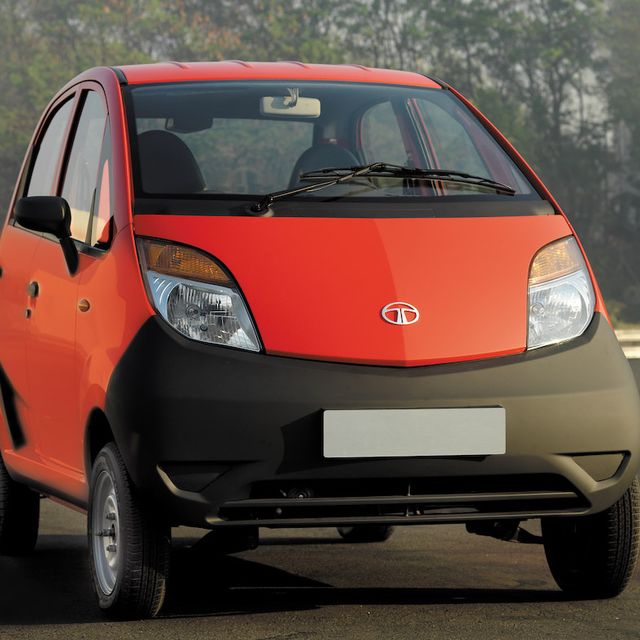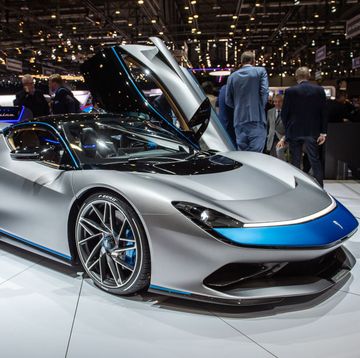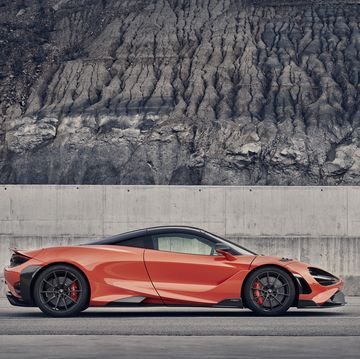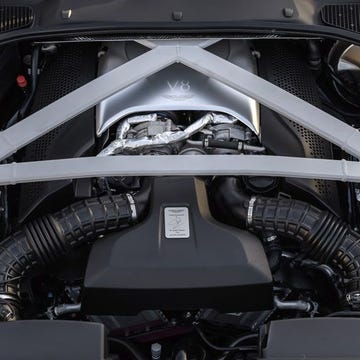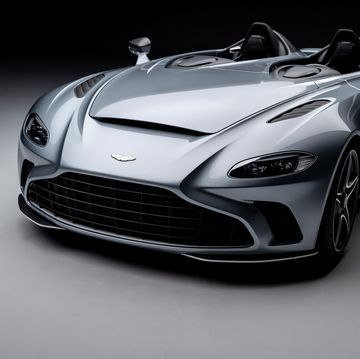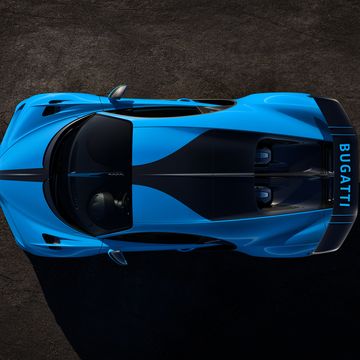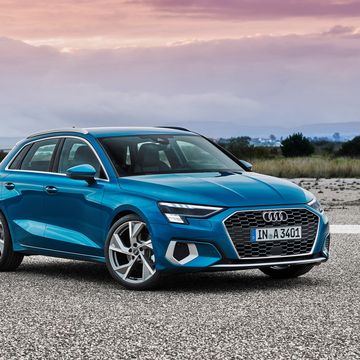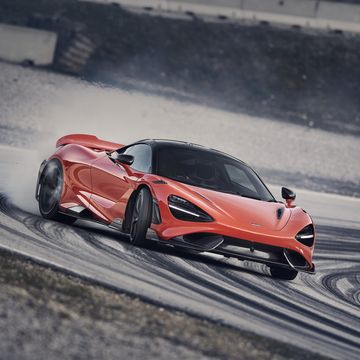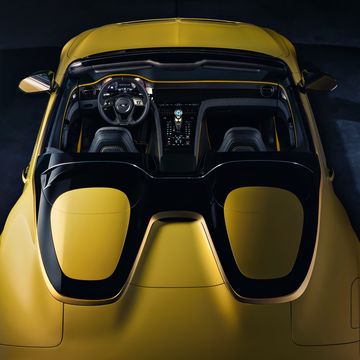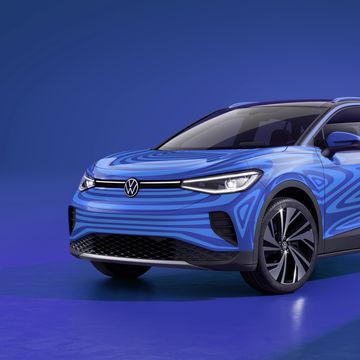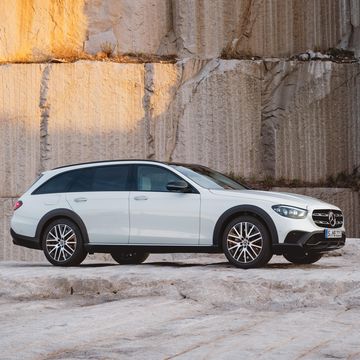Nestled among the fast and luxurious debuts at the 2008 Geneva auto show is the $2500 Nano show car from India’s Tata Motors.
This so-called people’s car caused quite a stir when it was unveiled in India in January as a car for its domestic market. Although it seats four, the Nano is a paltry 122 inches long—three feet shorter than a Honda Fit and six inches narrower. To maximize space, the wheels are located at the far corners of the car, the engine is mounted under the rear seat, and the roof is very high, to accomodate a very upright seating position. The Nano's height is actually about four inches greater than it's width.
Despite its small size, Tata says the car is safe—based on Indian crash-testing results—with crumple zones, anti-intrusion door beams, and seatbelts. But there are no airbags in the first-generation Nano, and the two-passenger rear seat only has lap belts.
Initially, the Nano will be offered to Indian buyers in three trims. The base trim is basic transportation—lacking such luxuries as air conditioning, fog lights, power windows, power steering, and power locks. In fact, it doesn't even have a heater or a trunk lid. The only way to get to the luggage space in the rear is to fold down the back seat.
The Nano’s powertrain is geared more toward fuel saving than drag racing. The aluminum two-cylinder, 623cc engine produces just 33 horsepower but should be frugal enough to manage 50 mpg. Power is routed through a four-speed manual transmission to the rear wheels.
Keeping the cost down for buyers in emerging markets was a challenge partly solved with several unique touches. The Nano’s instrument cluster—housing only an odometer and a fuel gauge—is centrally mounted, for example, so the car can easily be adapted for right- or left-hand-drive countries. The door handles are identical on both sides to further trim costs. And the Nano makes do with a single, non-articulated windshield wiper, although it's a big one.
Interior trim is very basic, consisting of obviously inexpensive black plastic and sheetmetal painted in the same color as the exterior.
The tires are tiny—155/65R-12 radials mounted on steel wheels with just three lug nuts.
Also shown at Geneva was an upmarket version of the Nano with nicer interior trim, 13-inch wheels, fog lights, a heater and air conditioner, and headrests and shoulder belts for the rear passengers. The price for this version was not announced, but many of these upgrades will also be offered individually on the base Nano.
As India industrializes, the Nano is designed to provide affordable transportation for families. Chairman Ratan Tata wanted to produce a vehicle that was safer and more convenient than rickshaws or scooters. Aside from the tiny Nano, Tata sells a variety of vehicles in India, Sri Lanka, Nepal, and several other countries.
Initially, the small car is for sale in India only, with exports to begin within four years. Tata officials have said they plan to offer a second-generation Nano in Europe in 2012 that meets European safety and emissions standards. There are no plans to sell the entry-level car in North America.
Csaba Csere joined Car and Driver in 1980 and never really left. After serving as Technical Editor and Director, he was Editor-in-Chief from 1993 until his retirement from active duty in 2008. He continues to dabble in automotive journalism and WRL racing, as well as ministering to his 1965 Jaguar E-type, 2017 Porsche 911, 2009 Mercedes SL550, 2013 Porsche Cayenne S, and four motorcycles—when not skiing or hiking near his home in Colorado.
